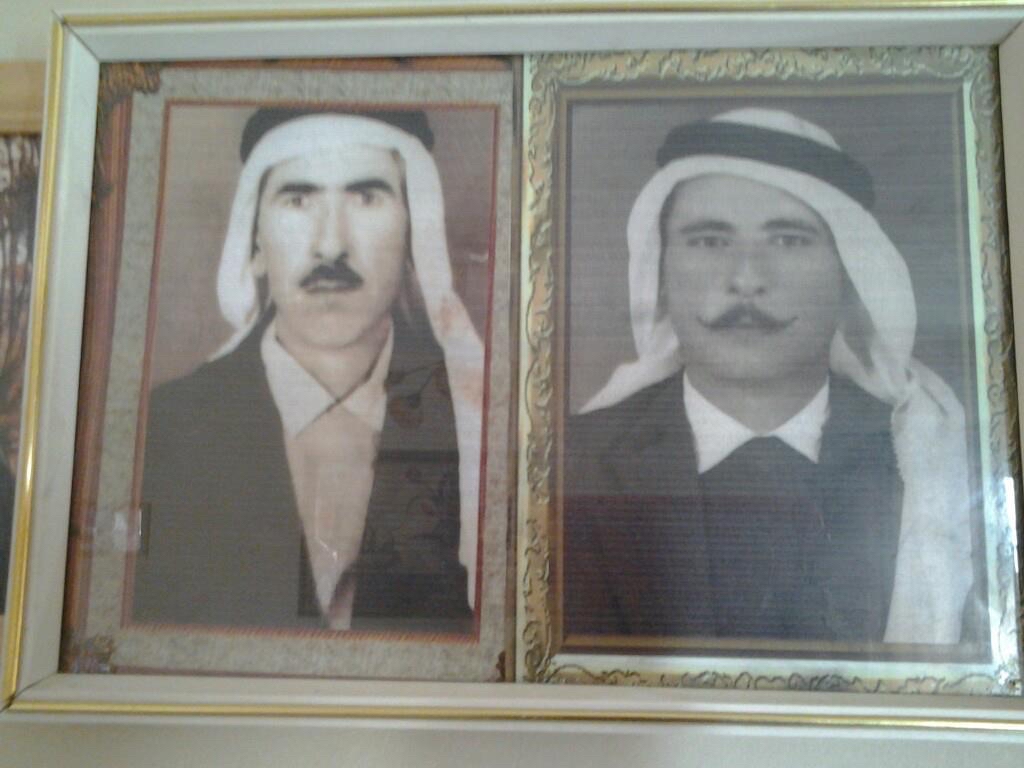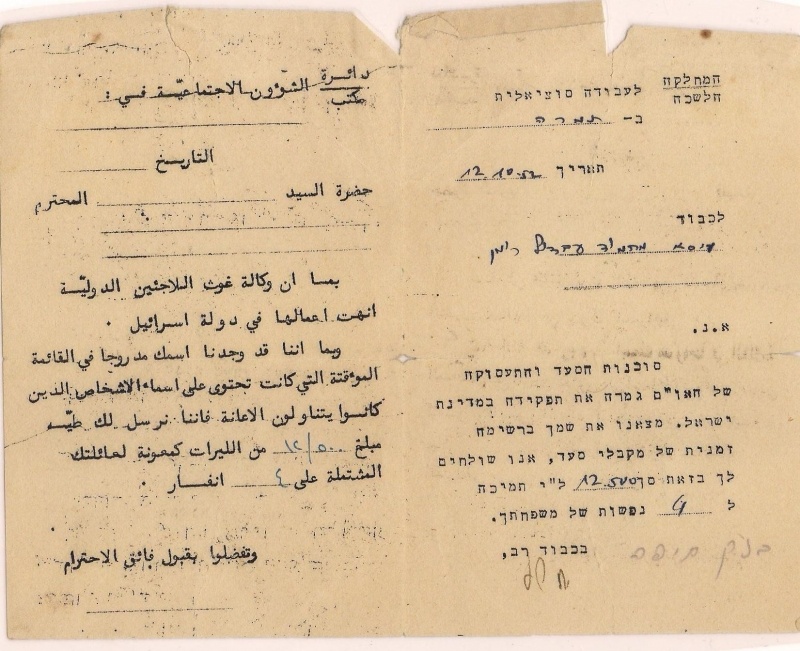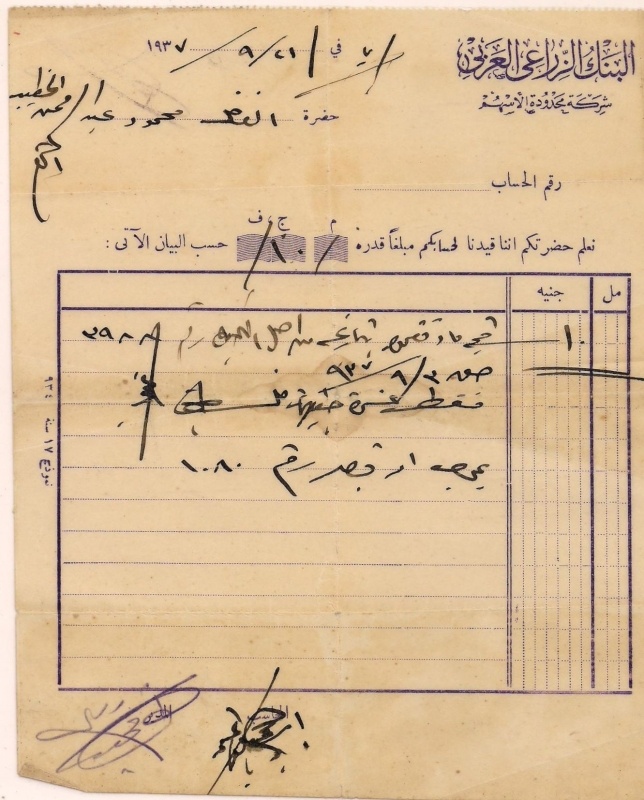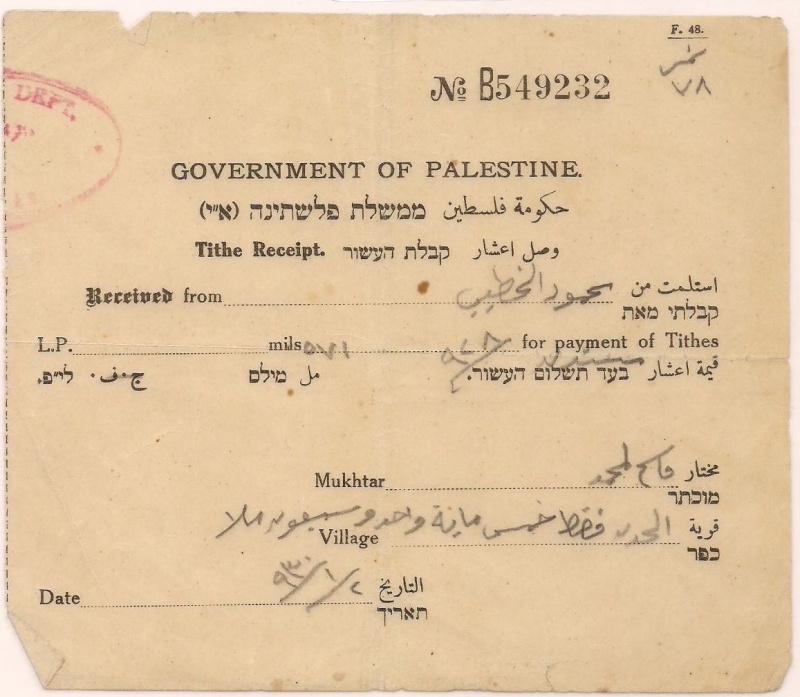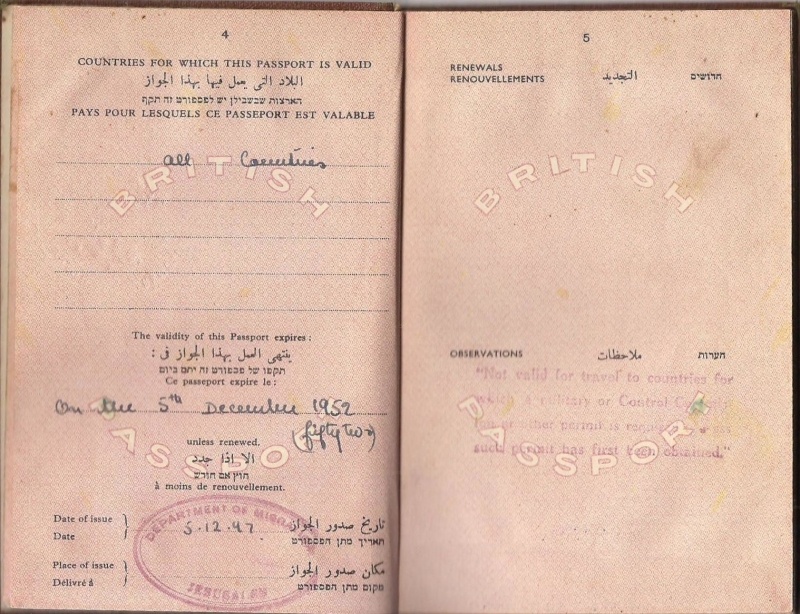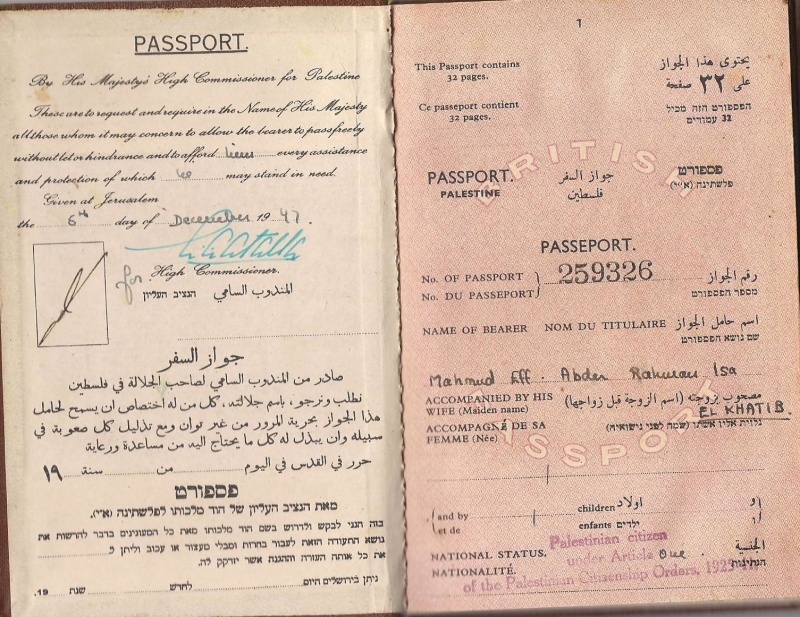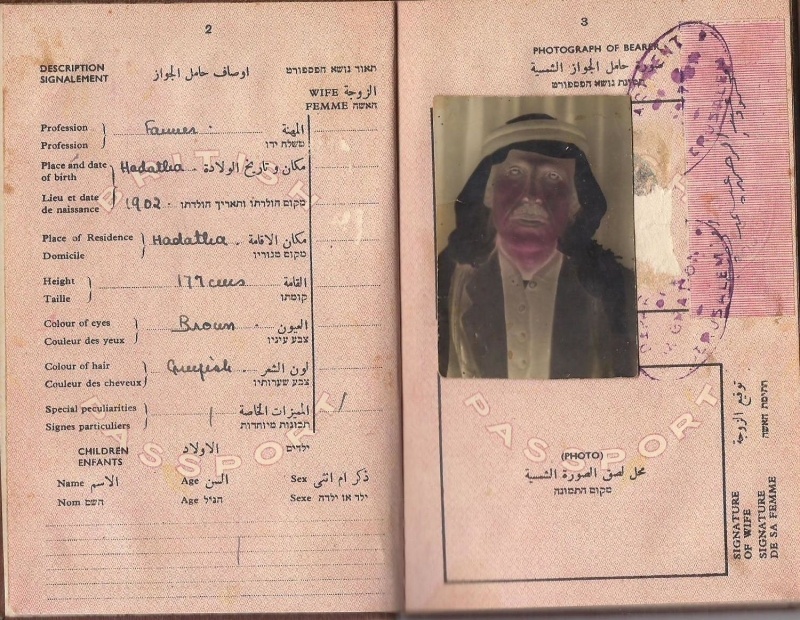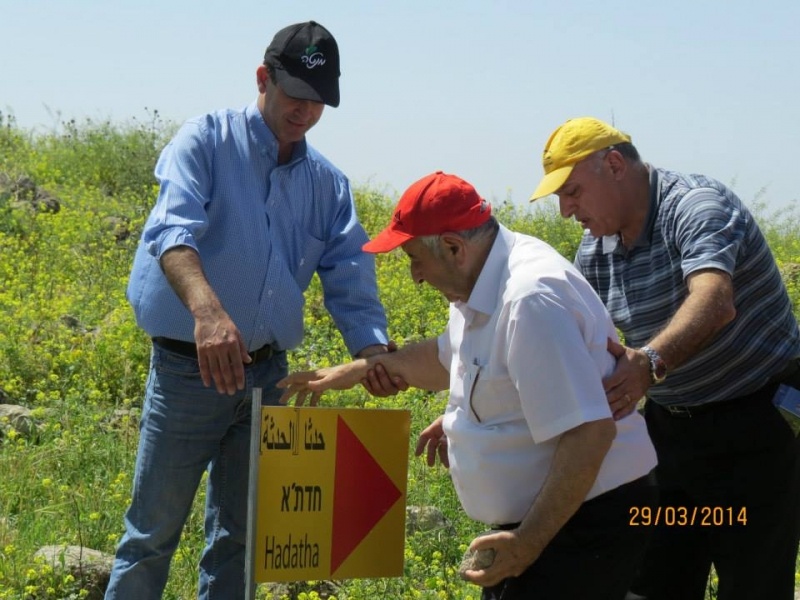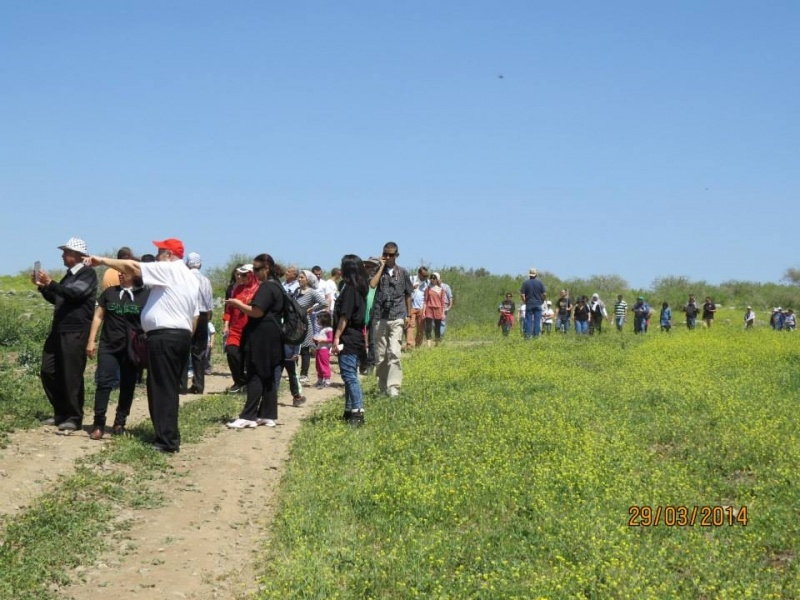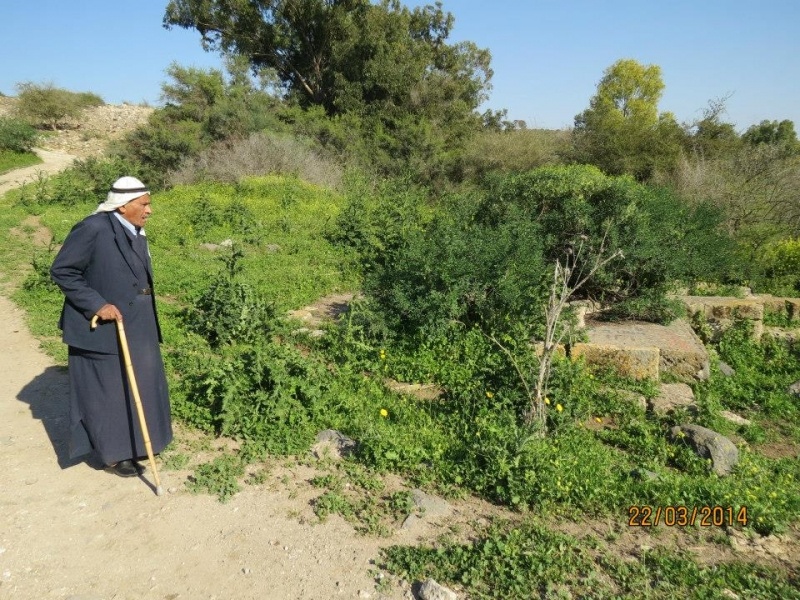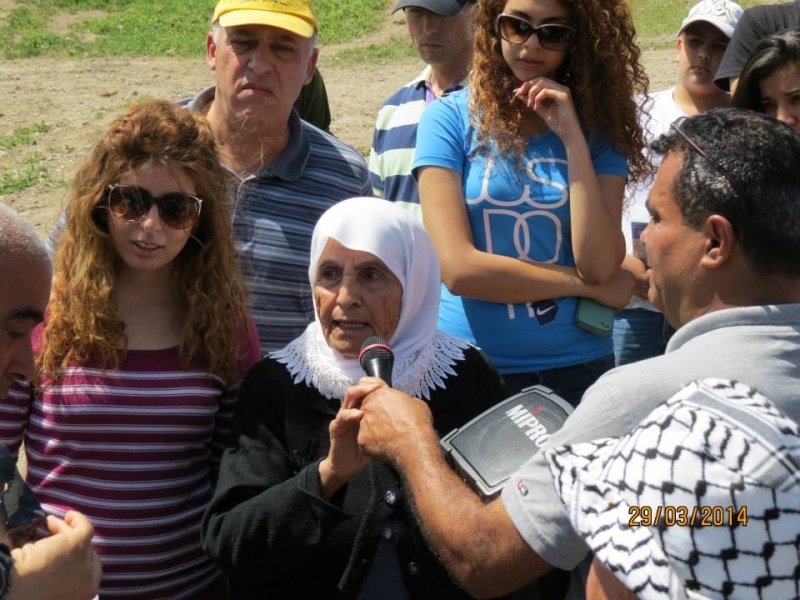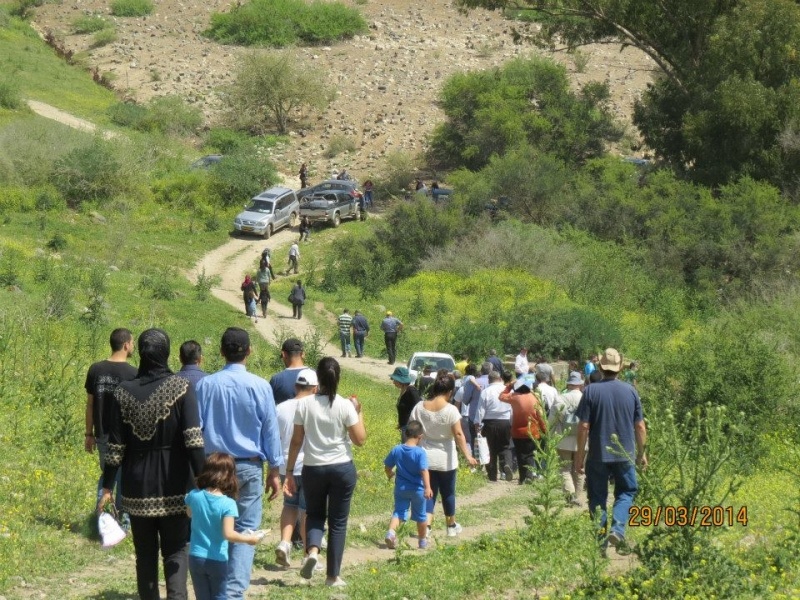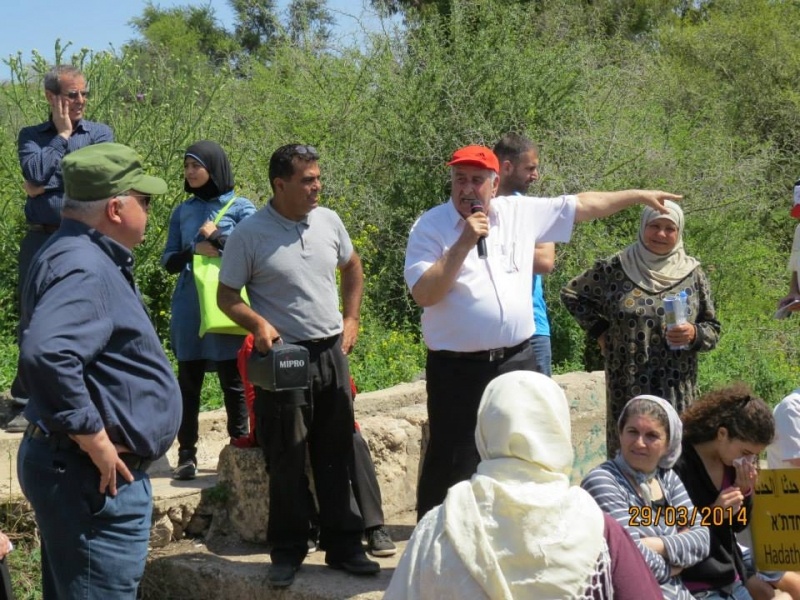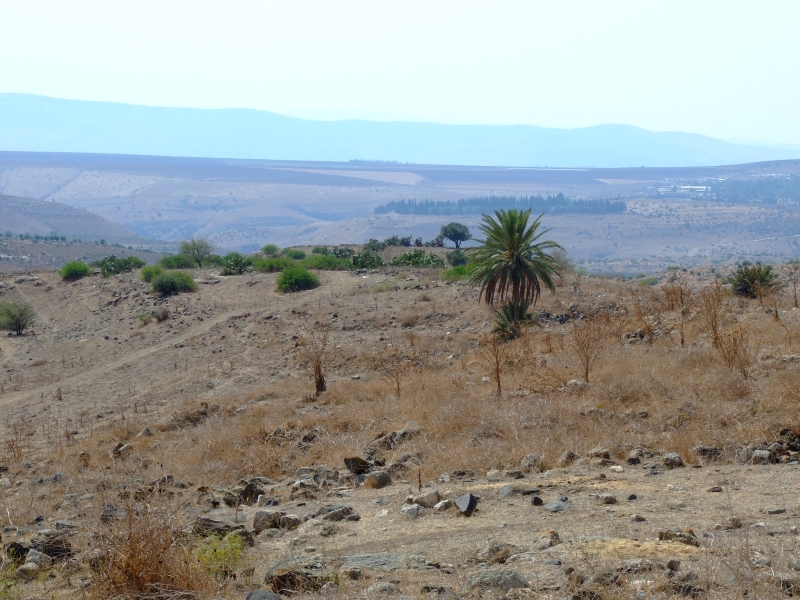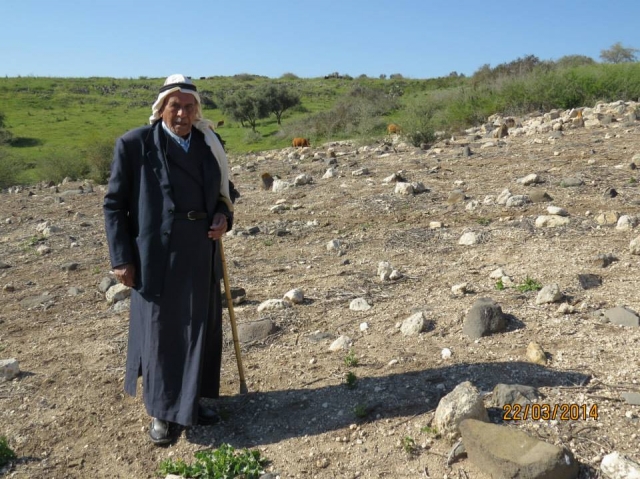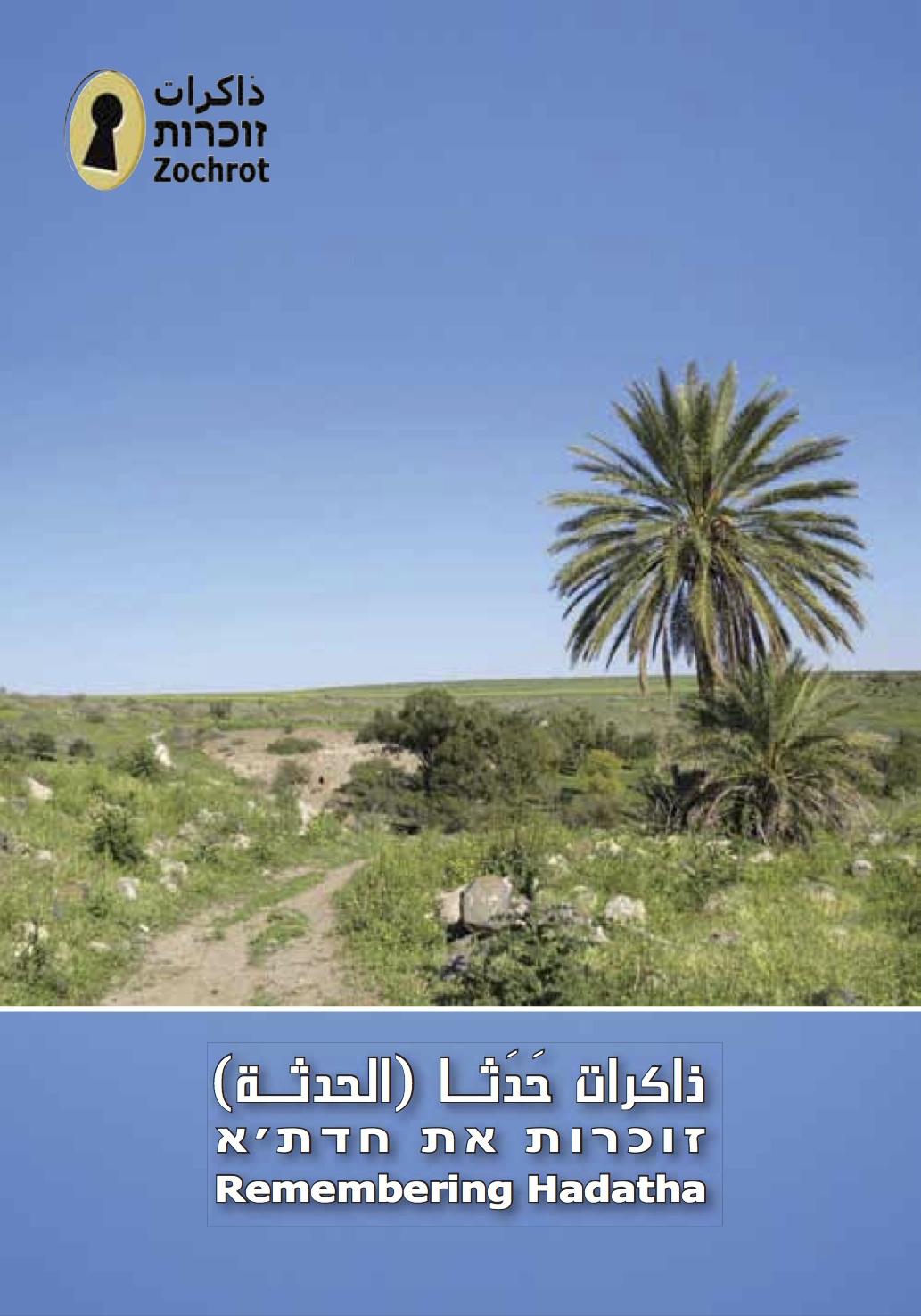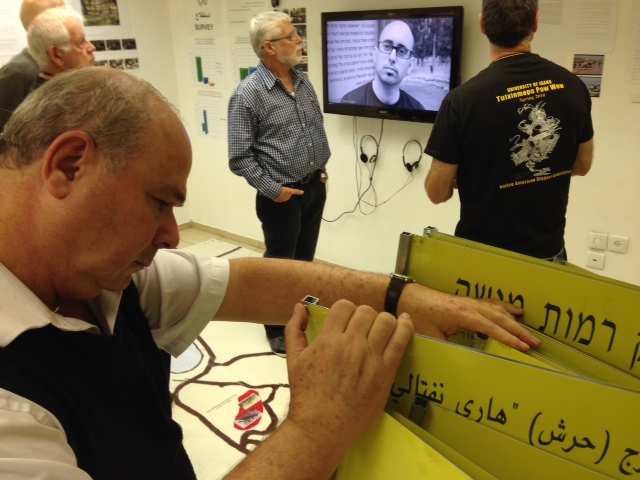Info
District: Tiberias
Population 1948: 600
Occupation date: 12/05/1948
Jewish settlements on village/town land before 1948: None
Jewish settlements on village/town land after 1948: None
Background:
Hadatha before 1948
The village of Hadatha was located 12.5km from the city of Tiberias, in between two small wadis. It was to the east and west of a gently sloping, rocky hill and surrounded by a basin fed by numerous wadis.
In the late nineteenth century, Hadatha was described as a village built of stone on top of a hill. At the time, there were 150 residents who based their income on grapes, figs and olives. In 1944-45, the village consisted of 520 inhabitants, where the majority were Sunni Muslims. In 1897, an elementary school was established during the Ottoman period, however closed during the British mandate. The villagers paid taxes on their beehives, wheat, barley and on their goats. Furthermore, agriculture was also based on their olives and vegetables. The olive trees were planted in the highlands to the north and east of the village, whilst vegetables were cultivated to the south, west and east. In 1944-45, the land consisted of 8,379 dunums.
Occupation and depopulation
In regards to the occupation and depopulation, there are some inconsistencies. Hadatha was one of four villages, in which an Israeli report was evacuated on the 6th of April 1948 on orders from the Arab Higher Committee. However, the History of the Haganah states that the village was occupied over a month later, on the 12th of May by units of the Golani brigade. It further stated that the inhabitants fled in fear of the Israeli forces, implying that the evacuation was a result of a military assault on the village.
Israeli Settlements on village lands
There are no settlements on the village lands. However, in 1946 the Zionists established the settlement of Kefar Qish on lands belonging to the nearby village of Ma’dhar.
The village today
Today, the only indication that there once was a village here is shown with the rubble from the houses that once stood there. The area is fenced in and used as cow pasture. On the village lands, mulberry and fig trees grow, as well as many cacti. The surrounding lands are used by the residents of Kefar Qish who have planted almond trees and vegetables.
------------------------------
Source: al-Khalidi, Walid (ed.). All that remains: the Palestinian villages occupied and depopulated by Israel in 1948. Washington DC: 1992.


